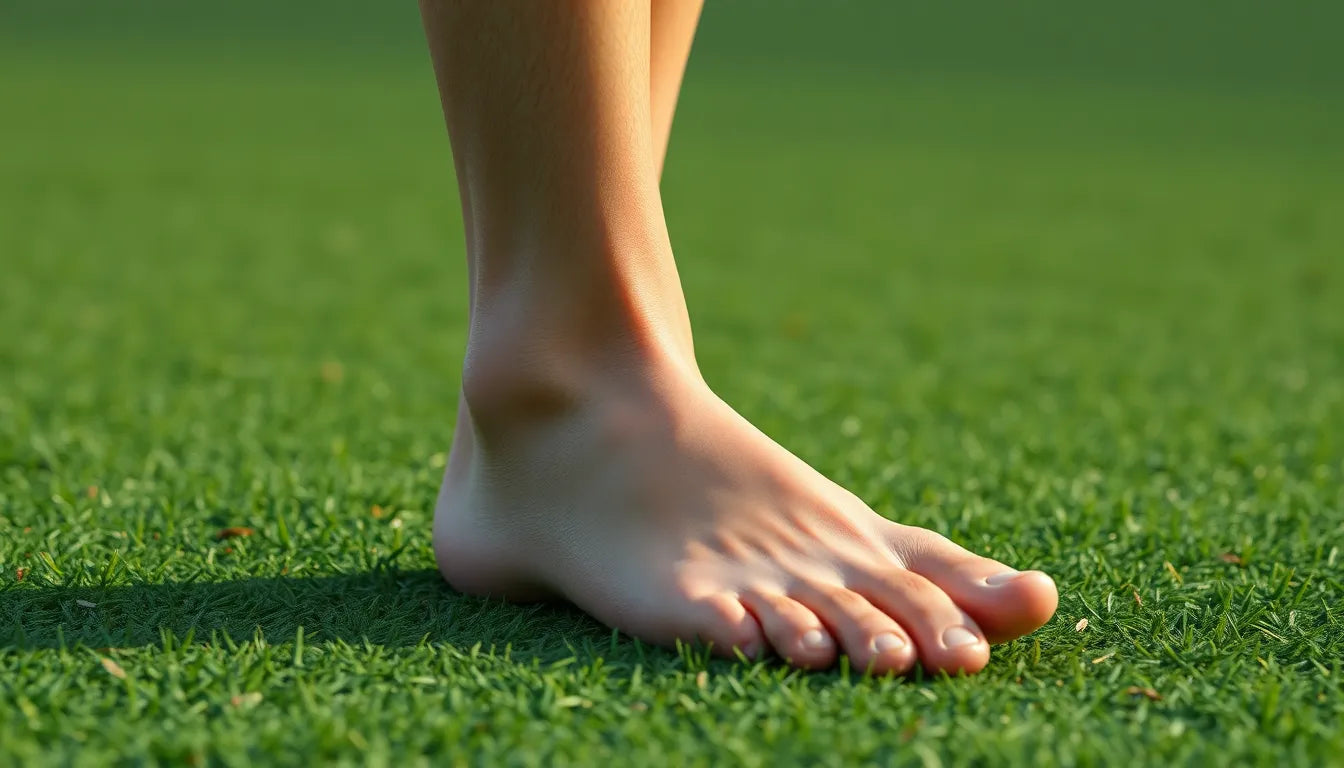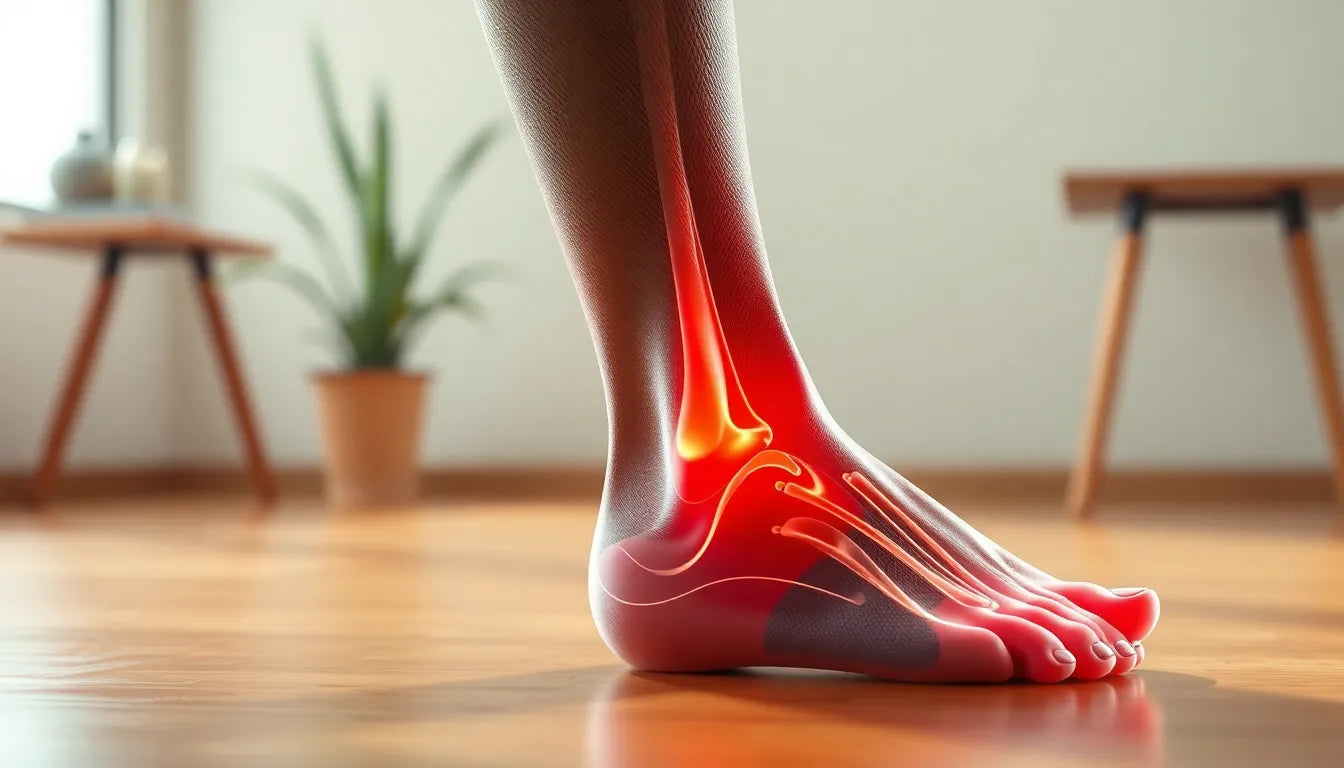Our feet are the foundation of our mobility, yet they often endure the most neglect until discomfort strikes. Common foot issues such as plantar fasciitis, flat feet, and heel pain can significantly impact daily activities and overall well-being. These conditions often stem from a lack of flexibility and strength in the feet, highlighting the importance of maintaining foot health through regular stretching exercises. By incorporating targeted foot stretching routines, you can alleviate pain, enhance flexibility, and improve your overall foot health.
why focus on foot stretching?
Foot stretching exercises are not just about relieving existing discomfort; they play a crucial role in preventing future injuries. Regular stretching of the feet can help maintain the elasticity of muscles and tendons, which is essential for absorbing the impact of daily activities. Moreover, foot stretching can enhance your posture and balance, contributing to better overall body alignment and reducing the risk of falls and related injuries.

Lumbar support belt
Provides adjustable support for lower back pain, ideal for daily comfort and relief.
In recent years, awareness of the benefits of foot exercises has grown significantly, with both clinical and home settings adopting these practices. Whether you're an athlete looking to improve performance or someone seeking relief from chronic foot pain, foot stretching exercises offer a simple yet effective solution. By dedicating a few minutes each day to these exercises, you can make a substantial difference in your foot health and overall mobility.
In the following sections, we'll delve deeper into specific foot stretching exercises that can be easily incorporated into your daily routine. These exercises are designed to target various aspects of foot health, from enhancing flexibility to strengthening the intrinsic muscles of the foot. Whether you're dealing with specific foot conditions or simply aiming to maintain optimal foot health, these exercises are a valuable addition to your wellness regimen.
essential foot stretching exercises to enhance mobility
Incorporating foot stretching exercises into your daily routine can significantly improve foot flexibility, alleviate discomfort, and prevent future injuries. Here, we explore some highly recommended exercises that target different areas of the foot, enhancing overall foot health and mobility.
stretching the sole of the foot
Execution: To perform this exercise, sit comfortably on a chair and cross one ankle over the opposite knee. Use your hand to gently pull the big toe upwards while stabilizing the heel with your other hand. Hold this position for 20–30 seconds, feeling a stretch along the sole of your foot. Repeat 2–3 times on each foot.
Purpose: This exercise targets the plantar fascia, a thick band of tissue running along the bottom of the foot. Regularly stretching this area can help prevent or alleviate the pain associated with plantar fasciitis, a common cause of heel pain.
treefall stretch for calf and achilles
Execution: Stand facing a wall with your hands placed at shoulder height. Position one leg forward with a bent knee and the other leg straight behind you. Keep both feet pointed straight ahead. Lean towards the wall to feel a stretch in the calf and Achilles tendon of the back leg. For a deeper stretch, bend both knees slightly. Hold for 20–30 seconds and repeat on the other side.
Purpose: This stretch is essential for improving flexibility in the posterior chain, particularly for individuals with tight calves or Achilles tendon issues. It enhances mobility and can prevent injuries related to these areas.
arch lift exercise
Execution: While seated, place your feet flat on the ground. Attempt to "shorten" your foot by pulling your toes towards your heel without curling them, effectively lifting the arch. Hold this position for a few seconds and repeat 10–15 times on each foot.
Purpose: This exercise strengthens the intrinsic muscles of the foot, supporting the arch and helping to address flatfootedness. Regular practice can improve foot posture and stability.
massage and stretch with a ball
Execution: Use a massage or tennis ball to roll under the sole of your foot, applying gentle pressure. Move the ball in various directions to cover the entire foot. Spend about 1–2 minutes on each foot.
Purpose: This technique enhances circulation, provides myofascial release, and relieves tension in the foot. It's particularly beneficial for those experiencing tightness or discomfort in the foot muscles.
band-resisted stretches
Execution: Sit on the floor and loop an exercise band around the forefoot. Push your foot down or to the side against the resistance of the band for 10 repetitions. Repeat on both feet.
Purpose: These stretches are especially useful for rehabilitation after an ankle sprain. They help strengthen and stretch the muscles of the foot and ankle, aiding in recovery and preventing future injuries.
tips for effective foot stretching
To maximize the benefits of these exercises, consider the following tips:
- Always warm up before stretching to prepare your muscles and prevent injury.
- Hold each stretch for 20–30 seconds and repeat 2–3 times on each side.
- Focus on a gentle pull rather than forcing the stretch to avoid pain and potential injury.
- Incorporate these exercises into your routine regularly to maintain foot health and flexibility.
By dedicating time to these foot stretching exercises, you can enhance your foot health, reduce discomfort, and improve your overall mobility. Whether you're dealing with specific foot conditions or simply aiming to maintain optimal foot health, these exercises are a valuable addition to your wellness regimen.
enhancing foot health with ergonomic aids
Incorporating ergonomic aids such as supportive footwear or custom insoles can significantly enhance the effects of your foot stretching exercises. These aids work synergistically with your stretching routine by providing additional support and cushioning, which can help maintain proper foot alignment and reduce stress on the feet during daily activities. By combining these ergonomic solutions with regular stretching, you can achieve long-term improvements in foot comfort and health.

Women's Posture Shirt™ - White
Supports posture and relieves tension with patented Neuroband™ technology for women's comfort.
tailored advice for specific foot conditions
For individuals with specific foot conditions like plantar fasciitis or flat feet, it's important to adapt foot stretching exercises to meet your unique needs. For instance, those with plantar fasciitis may benefit from focusing more on exercises that stretch the plantar fascia, while individuals with flat feet should emphasize strengthening the arch muscles. Additionally, these exercises can be modified for different age groups, ensuring that both children and older adults can safely participate and benefit from improved foot health.
frequently asked questions
how often should I perform foot stretching exercises?
For optimal results, it is recommended to perform foot stretching exercises daily or at least three to four times a week. This frequency helps balance effectiveness with adequate recovery time for your muscles and tendons.
what should I do if stretching causes pain?
If you experience pain while stretching, it's important to stop immediately and reassess your technique. Ensure that you are not overstretching, and focus on a gentle pull. If pain persists, consult a healthcare professional to tailor the exercises to your needs or to rule out any underlying issues.
can these exercises prevent foot injuries?
Yes, regular foot stretching exercises can help prevent foot injuries by improving flexibility, strengthening foot muscles, and maintaining proper alignment. This proactive approach reduces the risk of common injuries, such as sprains and strains.
are these exercises suitable for everyone?
While foot stretching exercises are generally safe for most people, individuals with specific health conditions or severe mobility issues should consult a healthcare professional before starting a new exercise regimen. This ensures that the exercises are appropriate and safe for their specific circumstances.


















